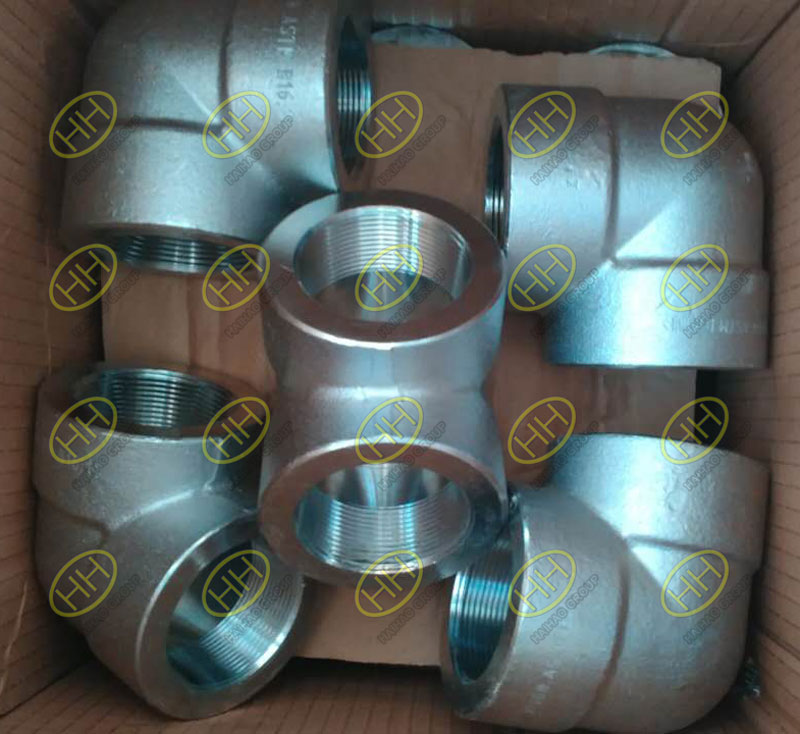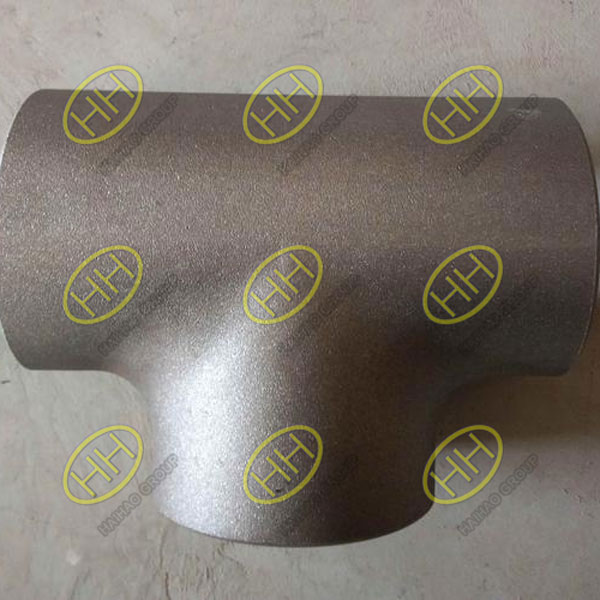How many types of tees are there in piping systems?
Tees are essential pipe fittings used to connect three sections of pipe, allowing fluid or gas to flow through the pipeline. Depending on their application and design, tees can be classified in various ways. In this article, we’ll explore the different classifications of tees based on pipe diameter, connection types, material, and branch orientation.

EN 10253-2 P235GH SMLS Equal Tee
1.Classification by Pipe Diameter
An equal tee is a type of tee where the main pipe (run) and the branch pipe have the same diameter. This type of tee is used when the flow needs to be split equally between the main and branch pipes.

ASME B16.9 A860 WPHY60 reducing tee
A reducing tee features a branch pipe with a smaller diameter than the main pipe. This type of tee is commonly used to reduce the flow from the main line to a smaller pipe, typically for specialized applications or to control flow distribution.
2.Classification by Connection Type
Buttweld Tee:
A buttweld tee is welded to the pipes using a butt welding process. It is designed to be directly welded to the pipes at each end, ensuring a strong, permanent connection.

ANSI ASME B16.11 socket weld equal tee
Socket Weld Tee:
A socket weld tee connects to the pipe by inserting the pipe into the socket of the tee and then welding or fusing the joint. This type of tee is used in smaller diameter pipes, typically under 2 inches, and provides a robust connection.
Clamp Tee:
A clamp tee features compression fittings on both ends of the tee. The pipe is inserted and then secured by tightening the compression nut, making it easy to install without the need for welding.

Stainless steel forged threaded elbow A182 F316 90 degree
Threaded Tee:
A threaded tee uses threaded connections at each end, where the pipe is screwed into the fitting. This type of tee is often used in applications where welding is not possible, providing a convenient and flexible way to join pipes.
3.Classification by Material
Tees are available in various materials to suit different operating environments and conditions. Some common material types include:
Carbon Steel Tees:
Carbon steel tees are widely used in many industries and are available in materials such as ASTM A105, Q235, 16Mn, ASTM A350 LF1/2, and ASTM A694 F42 among others. They offer strength, durability, and excellent weldability, making them suitable for low to medium-pressure systems.
Alloy Steel Tees:
Alloy steel tees are designed to withstand higher temperatures and pressures. Examples include ASTM A182 F1, F5, F11, A335P22, and Cr5Mo. These materials are typically used in high-temperature and high-pressure applications like power plants and chemical processing systems.
Stainless Steel Tees:
Stainless steel tees, such as those made from ASTM A182 F304, F316, 321, and other grades, provide excellent corrosion resistance. They are often used in chemical, food processing, and marine applications where resistance to corrosion and oxidation is critical.
PVC Tees:
PVC tees are made from polyvinyl chloride (PVC) and are commonly used in plumbing and drainage systems. They are lightweight, cost-effective, and resistant to many chemicals.
Ductile Iron Tees:
Ductile iron tees are commonly used in water supply and sewage systems. They offer high strength, flexibility, and resistance to wear and tear.
4.Classification by Branch Orientation

ASME B16.9 BW SCH80 Inconel 625 Straight Tees
A straight tee has the branch pipe perpendicular to the main run. This is the most common type of tee, where the branch pipe extends at a 90-degree angle from the main pipe. It is ideal for situations where the flow needs to be distributed uniformly.

Socket weld lateral tee
An Lateral tee has the branch pipe at an angle to the main pipe, typically at 45 or 60 degrees. This design is used when the branch pipe needs to be at an angle rather than perpendicular, which is helpful in systems with space constraints or when specific flow directions are needed.
Tees are a versatile and critical component in pipeline systems, allowing for the efficient distribution of fluid or gas. Depending on the application and specific requirements, tees can be classified by pipe diameter, connection type, material, and branch orientation. Understanding the different types of tees ensures that the right fitting is chosen for the job, contributing to the overall efficiency, safety, and longevity of the pipeline system.
At Haihao Group, we offer a wide range of tees in various materials and configurations to meet the needs of our clients. Whether you need carbon steel, stainless steel we have the right solutions for your piping projects. Feel free to contact us for more information! Email:sales@haihaogroup.com
